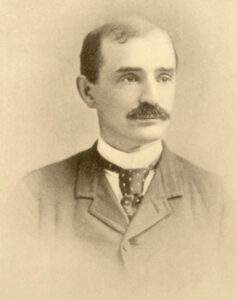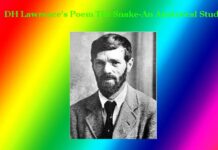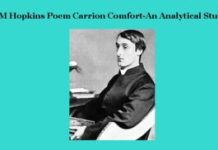Nature Images in Sassoon’s Essay ‘Return from the Somme’ and in Henry Reed’s Poem ‘Naming of Parts’
Nature Images in Sassoon’s Essay ‘Return from the Somme’ and in Henry Reed’s Poem ‘Naming of Parts’
Nature Images in Sassoon’s Essay ‘Return from the Somme’ and in Henry Reed’s Poem ‘Naming of Parts’
Siegfried Sassoon was a soldier and served the British Army as a Lieutenant General during World War -I. He was sent to France where two important battles were fought by the British and French forces against the Germans within the space of the Somme River. During the battle, Sassoon experienced the horror, decay and sufferance produced by war and became hostile to the warfare. Later on, he narrated his sad experiences of war in the essay entitled “Return from the Somme” which was given a place in his autobiographical essay anthology titled ‘Memoirs of an Infantry Officer’. In this autobiographical essay, Sassoon has made portraiture of landscape juxtaposing with the theme war-horror.
Like Siegfried Sassoon, Henry Reed the poet of the poem entitled ‘Naming of Parts‘ has also brought about vivid portraiture of natural images.
Though both the writers depicted the theme of the horror of war yet there is some considerable picture of nature and landscape which have been brought into action with two different outlooks and annotations.
Siegfried Sasson’s description of the horror of war mingles with the description of the landscape which is realistic as well as poetic. In his description, Sassoon makes a contrast between the peaceful natural world against the criminality of war. This contrast brings into focus the possibility of life on the one hand and the reality of death on the other. He experienced that the battle-wearied soldiers looked like ghosts and thus focus on the fact that there is nothing glorifying about war.
His account of nature is juxtaposed with warfare. He writes that when he along with his associates were busy inputting the tent up the mountain, he saw that the sun was going down in glory beyond the main road to Amiens. The horizon trees were dark blue against the glare. The dust of the road floated in wreathes while the long shadows of trees made a sort of mirage on the golden haze of the dust. The country along the river swarmed with camps, but the low sun made all seem to be pleasant. After nightfall, the landscape glowed and glinted with campfires and the half-moon appeared to bless the combatant armies with neutral beams.
Thus Sassoon gives a vivid account of natural objects juxtaposing the horror of war.
On the other hand, Henry Red in his poem ‘Naming Parts’ portrays the image of nature as a contrast to the image of horror that warfare produces. His account of nature is ironic and contrasting to the activities of the soldiers who are mechanical and humdrum in their daily life. His account of the natural image stands for life and regeneration. There is a tincture of sexuality which makes contrasts with the instruction of the army instructor who teaches the uses of a gun to the new recruits.
In stanza II of the poem ‘Naming of Parts,’ the instructor continues naming the parts of a gun such as a thumb and fingers in a mechanical fashion. On the other hand, the recruit responds to the sensuality of the spring activity in the garden. This emotional response to the ‘fumbling bees assaulting the flowers’ makes the recruit all the more conscious of that which they don’t have as soldiers.
When the soldiers notice that the ‘bees are assaulting and fumbling with the flowers, the image of sexuality appears in the poem. It is developed through the pun on ‘easing the spring’ which is at once a part of the gun and also sexual reproductive activity. The bolt and cocking piece of the gun and the breech that goes backward and forwards – all actions with reference to the gun – have sexual implications and refer to the sexual activity running on the objects of nature.
Thus the portraiture of nature differs from that of the account of Sasson’s. 0 0 0 Nature Images in Sassoon
Nature Images in Sassoon
Read More: E De Sauza’s Poem ‘Marriages are Made’: An Analytical Study
Nature Images in Sassoon
N. B. This article entitled ‘Nature Images in Sassoon’s Essay ‘Return from the Somme’ and in Henry Reed’s Poem ‘Naming of Parts” originally belongs to the book ‘World Poetry Criticism‘ by Menonim Menonimus. Nature Images in Sassoon
Books of Literary Criticism by M. Menonimus:
- World Short Story Criticism
- World Poetry Criticism
- World Drama Criticism
- World Novel Criticism
- World Essay Criticism
- Indian English Poetry Criticism
- Indian English Poets and Poetry Chief Features
- Emily Dickinson’s Poetry-A Thematic Study
- Walt Whitman’s Poetry-A Thematic Study
- Critical Essays on English Poetry
- Tawfiq al-Hakim’s Novel: Return of the Spirit-An Analytical Study
- Tawfiq al-Hakim’s Novel: ‘Yawmiyyat Naib Fil Arayaf’-An Analytical Study
- Analytical Studies of Some Arabic Short Stories
- A Brief History of Arabic Literature: Pre-Islamic Period …
Related Searches:
- ‘Dulce et Decorum Est’ Summary and Analysis
- Analysis of the Poem ‘Dulce et Decorum Est’
- ‘Harlem’ by Langston Hughes
- Still I Rise’ by Maya Angelou
- Telephone Conversation by Wole Soyinka Poem Analysis
- Marriages are Made by E De Sauza Summary











